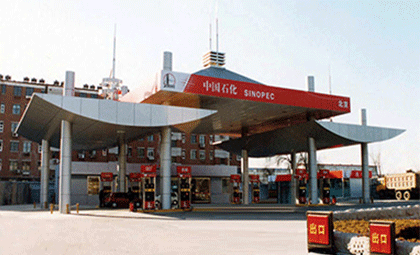
ໂຄງການນີ້ເປັນໂຄງການສະຖານທີ່ຕາລາງ / ສູງ 16 ແມັດ / ຍາວທັງຫມົດ 30 ແມັດ / span ທັງຫມົດ 18 ແມັດ
1. ການຕິດຕັ້ງກອບພື້ນທີ່ຂອງເຫລໍກຕ້ອງໄດ້ຮັບການປະຕິບັດຫຼັງຈາກການຍອມຮັບຂອງແກນໂຄງສ້າງຕ່ໍາແລະກະດານຝັງ.ຂໍ້ກໍານົດສໍາລັບການສະຫນັບສະຫນູນຕ່ໍາແມ່ນ: ຄວາມແຕກຕ່າງຄວາມສູງລະຫວ່າງການສະຫນັບສະຫນູນທີ່ຢູ່ໃກ້ຄຽງ (ໄລຍະ L2): ມູນຄ່າຂະຫນາດນ້ອຍກວ່າຂອງ L2 / 800 ແລະ 10mm, ໃນລະດັບຄວາມສູງຂອງຄວາມສູງຄວາມແຕກຕ່າງລະຫວ່າງການສະຫນັບສະຫນູນສູງສຸດແລະຕ່ໍາສຸດ: 20mm;
2. ກຳນົດຂັ້ນຕອນການຕິດຕັ້ງໂຄງພື້ນເຫຼັກຕາມກຳລັງແຮງ ແລະ ລັກສະນະໂຄງສ້າງຂອງຕາຂ່າຍ ແລະ ສະພາບການກໍ່ສ້າງຕົວຈິງຢູ່ສະຖານທີ່;
3. ຫຼັງຈາກການຕິດຕັ້ງກອບພື້ນທີ່ເຫຼັກ, ມັນຄວນຈະຖືກກວດສອບ:
ກ.ມູນຄ່າທີ່ອະນຸຍາດຂອງຄວາມຍາວດ້ານຂວາງຂອງແນວຕັ້ງແລະແນວນອນແມ່ນ 1/2000 ຂອງຄວາມຍາວ, ແລະບໍ່ຄວນສູງກວ່າ 30mm;
ຂ.ມູນຄ່າທີ່ອະນຸຍາດຂອງການຊົດເຊີຍສູນກາງຄວນຈະເປັນ 1/3000 ຂອງ span ຂອງກອບຊ່ອງເຫຼັກ, ແລະບໍ່ຄວນຫຼາຍກ່ວາ 30mm;
ຄ.ສໍາລັບກອບຕາຫນ່າງທີ່ສະຫນັບສະຫນູນໂດຍ periphery, ການບ່ຽງເບນຄວາມສູງທີ່ອະນຸຍາດແມ່ນ 1/400 ຂອງການສະຫນັບສະຫນູນທີ່ຢູ່ໃກ້ຄຽງ, ແລະບໍ່ຄວນສູງກວ່າ 15mm, ແລະສູງສຸດແລະຕໍາ່ສຸດທີ່ບໍ່ຄວນສູງກວ່າ 30mm;ສໍາລັບກອບຕາຫນ່າງທີ່ສະຫນັບສະຫນູນໂດຍຈຸດຫຼາຍ, ຄວາມແຕກຕ່າງກັນຄວາມສູງທີ່ອະນຸຍາດແມ່ນ 1/800 ຂອງການສະຫນັບສະຫນູນທີ່ຢູ່ໃກ້ຄຽງ, ແລະບໍ່ຄວນສູງກວ່າ 30mm;
ງ.ກວດສອບການ deflection ຂອງຕາຂ່າຍໄຟຟ້າຕາມສະເພາະແລະຄວາມຕ້ອງການຂອງການອອກແບບ.ຫຼັງຈາກການກໍ່ສ້າງ, deflection ຂອງໂຄງການຊ່ອງເຫຼັກຈະບໍ່ຫຼາຍກ່ວາ 115% ຂອງມູນຄ່າການຄິດໄລ່ການອອກແບບ.(ຄ່າການເໜັງຕີງສູງສຸດຂອງຂອບຕາຂ່າຍ L/250)
4. ຖ້າຫາກວ່າມີລູກເຊື່ອມຢູ່ໃນທ້ອງຖິ່ນ, ການເຊື່ອມໂລຫະ groove ຖືກນໍາໃຊ້ສໍາລັບການເຊື່ອມໂລຫະບານເຊື່ອມແລະ rod, ແລະຊັ້ນ seam ການເຊື່ອມຄວນຈະບໍ່ຕ່ໍາກວ່າຊັ້ນທີສອງ.
5. ຫຼັງຈາກການຕິດຕັ້ງໂຄງຮ່າງການເຫຼັກໄດ້ຖືກສໍາເລັດ, ດ້ານຂອງຂໍ້ຕໍ່ກອບຊ່ອງຫວ່າງແລະ rods ຄວນສະອາດແລະບໍ່ມີຮອຍແປ້ວແລະຝຸ່ນ.ຂໍ້ຕໍ່ແລະຂຸມເກີນຂອງຂໍ້ຕໍ່ລູກບານຄວນຖືກຕື່ມໃສ່ແລະປະທັບຕາດ້ວຍນໍ້າມັນ.
6. ໃນໄລຍະການນໍາໃຊ້ຕາຂ່າຍໄຟຟ້າ, ການບໍາລຸງຮັກສາການຕ້ານການ corrosion ທີ່ສົມບູນແບບຄວນໄດ້ຮັບການປະຕິບັດທຸກໆ 4 ຫາ 5 ປີ.



ເວລາປະກາດ: 10-03-2022

